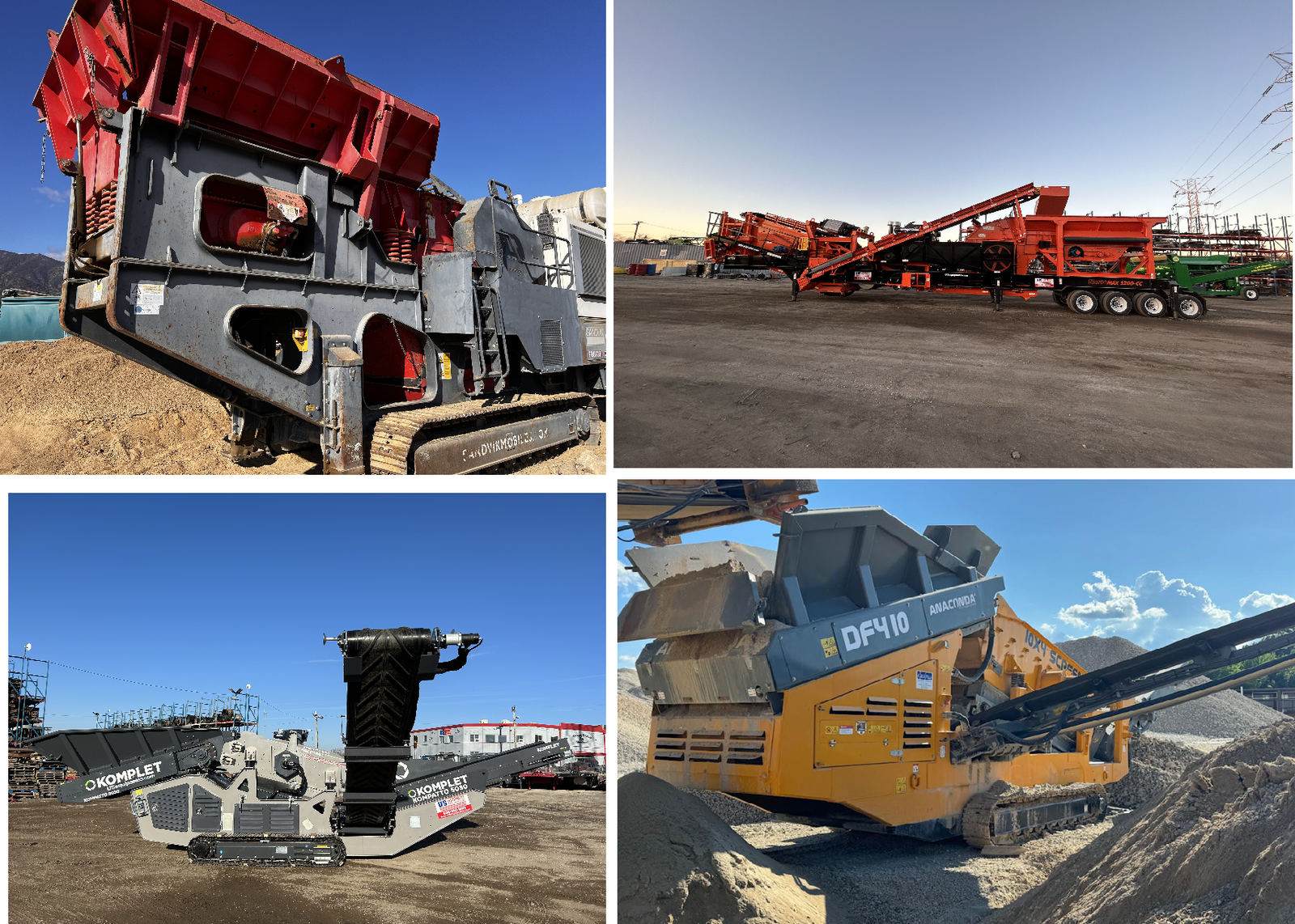Trends in Equipment Design: What’s Driving the Future of Crushing and Screening?

The mining, quarrying, and construction industries rely heavily on crushing and screening equipment to process materials efficiently. As demand for high-quality aggregates grows, so does the need for innovative equipment designs. New trends are reshaping the industry, focusing on efficiency, automation, sustainability, and safety. Let’s explore what’s driving the future of crushing and screening.
The Evolution of Crushing and Screening Equipment
Crushing and screening equipment has come a long way. Early systems were simple, with manual operations and limited efficiency. Today, technological advancements have transformed these machines into high-performance units capable of processing large volumes of materials with minimal downtime.
Factors driving these changes include:
- Increasing demand for higher productivity
- The need for energy-efficient solutions
- Stricter environmental regulations
- Rising labor and operational costs
Manufacturers are now integrating smarter, more adaptive technologies into their equipment to meet modern-day challenges.
Key Trends in Equipment Design
Automation and Smart Technology
Automation is one of the most significant advancements in crushing and screening. AI and machine learning are revolutionizing the industry by:
- Enabling real-time monitoring
- Automating machine settings for optimal performance
- Detecting faults before they cause failures
Smart systems help operators make data-driven decisions, reducing human error and increasing efficiency.
Energy Efficiency and Sustainability
With energy costs rising and environmental concerns growing, manufacturers are designing more energy-efficient machines. Innovations include:
- Advanced drive systems that consume less power
- Integration of solar and battery storage for remote sites
- Reduced dust and noise emissions for better environmental compliance
This shift toward sustainable solutions helps companies reduce their carbon footprint while saving on operational costs.
Mobile and Modular Equipment Solutions
Traditional stationary plants are being replaced with mobile and modular designs. These provide:
- Greater flexibility – Machines can be moved between job sites
- Lower installation costs – Modular designs require less on-site construction
- Improved scalability – Easy expansion or downsizing based on demand
These innovations cater to industries that require high mobility, such as road construction and demolition projects.
Enhanced Safety Features
The focus on safety has never been greater. Modern crushing equipment incorporates the following:
- Remote monitoring to reduce the need for manual inspections
- Automated shutdown systems that detect potential hazards
- Ergonomic designs that improve operator comfort
By integrating advanced safety features, manufacturers aim to reduce workplace injuries and improve compliance with regulatory standards.
Hybrid and Electric-Powered Equipment
The shift from diesel-powered to hybrid and fully electric crushers is gaining momentum. These machines:
- Reduce fuel consumption and lower operating costs
- Minimize emissions, helping companies meet environmental targets
- Operate more quietly, improving worksite conditions
Hybrid technology saves fuel while ensuring the same power output as traditional crushers.
Smart Wear Parts and Predictive Maintenance
Predictive maintenance is transforming the way equipment is maintained. Using IoT sensors and real-time data analytics, machines can:
- Monitor wear and tear on crucial parts
- Alert operators of needed maintenance before breakdowns occur
- Optimize component replacement schedules to minimize downtime
This proactive approach enhances efficiency and reduces unexpected repair costs.
Versatility and Multi-Purpose Machines
Modern crushing and screening equipment is designed to handle multiple material types, making them more versatile. Features include:
- Adjustable settings to process different rock hardness levels
- Interchangeable parts to switch between applications
- Customizable designs for specific project requirements
This flexibility allows companies to maximize their equipment investment across various projects.
Challenges in Adopting New Technologies
While these advancements bring numerous benefits, they also pose challenges, including:
- High initial investment costs – New technologies can be expensive to implement
- Training requirements – Operators must be skilled in using advanced systems
- Integration with existing infrastructure – Compatibility issues may arise when upgrading
However, companies investing in modern equipment stand to gain long-term productivity and cost savings benefits.
Future Outlook of Crushing and Screening Equipment
The future of crushing and screening looks promising, with:
- More AI-driven automation to enhance efficiency
- Improved energy-efficient designs to meet sustainability goals
- Stronger regulatory compliance pushing for cleaner operations
As technology evolves, crushing and screening equipment will become even more advanced, driving productivity and environmental responsibility forward.
Conclusion
The crushing and screening industry is undergoing a significant transformation from automation to sustainability. Equipment designs are becoming smarter, more efficient, and environmentally friendly, ensuring the industry meets future challenges head-on. Companies that embrace these trends will stay ahead of the competition while reducing costs and improving safety.
FAQs
- What is the biggest trend in crushing and screening equipment?
Automation and AI-driven control systems are revolutionizing efficiency, safety, and maintenance.
- How is automation improving crushing efficiency?
Automation allows for real-time adjustments, predictive maintenance, and reduced human error, leading to better performance.
- Are hybrid crushers better than traditional diesel-powered models?
Yes, hybrid crushers offer fuel savings, lower emissions, and quieter operation while maintaining the same power output.
- What are the challenges in adopting smart crushing technology?
High costs, training requirements, and integration issues can hinder companies from transitioning to smart equipment.
